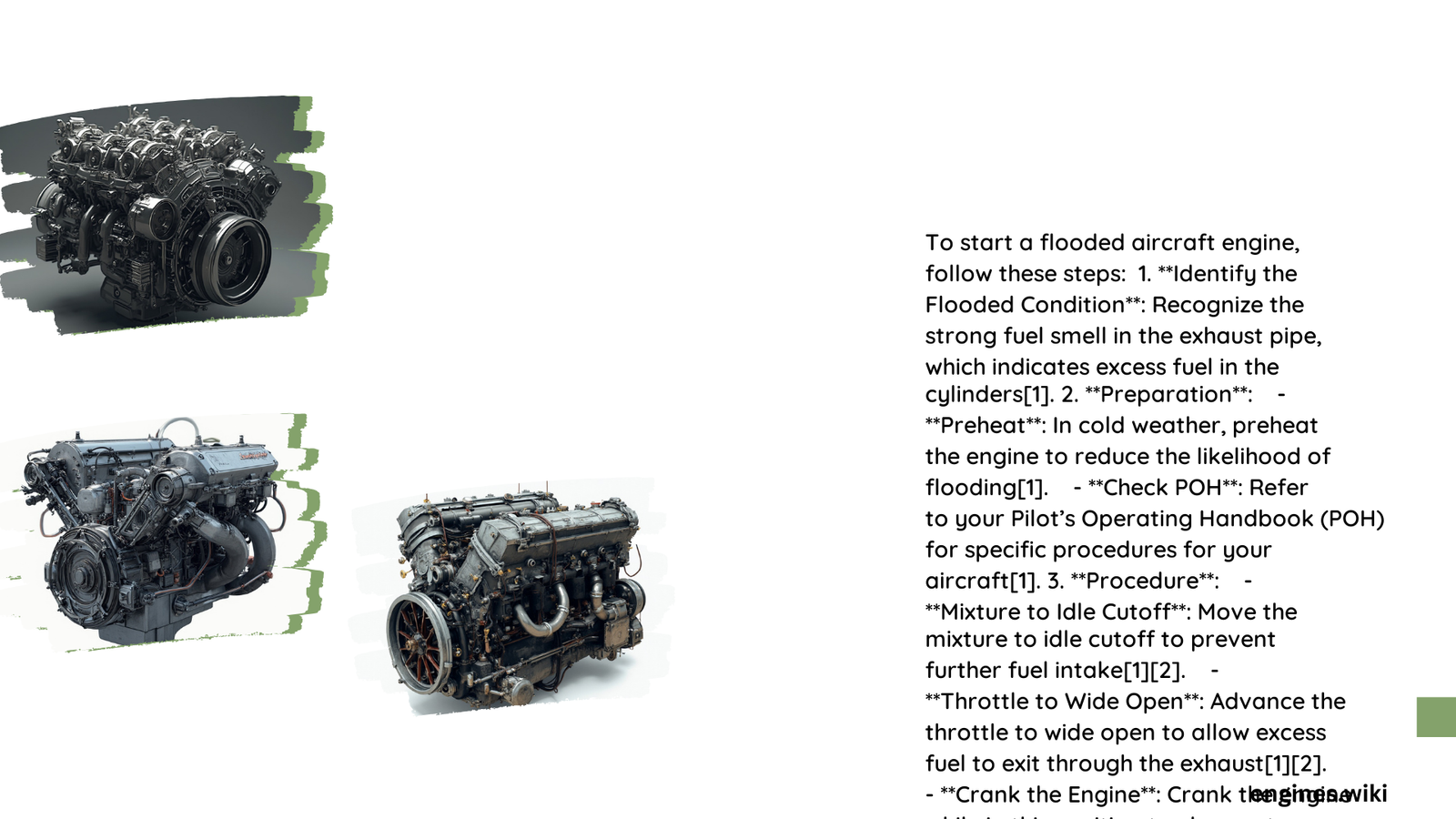When an aircraft engine becomes flooded, pilots face a complex challenge that requires precise technical intervention. Excess fuel accumulation in the cylinders and intake manifold can prevent successful engine start, potentially compromising flight safety. Understanding the nuanced procedures for clearing a flooded engine is crucial for maintaining operational readiness and preventing potential mechanical damage during restart attempts.
What Causes Aircraft Engine Flooding?
Aircraft engine flooding occurs through multiple mechanisms:
- Excessive Priming
- Over-application of primer during cold starts
- Incorrect fuel system management
-
Improper mixture control techniques
-
Environmental Factors
- Extreme temperature variations
- High humidity conditions
- Extended ground idle periods
How to Diagnose a Flooded Engine?

Symptom Identification
| Symptom | Potential Indication |
|---|---|
| Strong Fuel Odor | Excessive Fuel Presence |
| Difficulty Cranking | Fuel Saturation in Cylinders |
| Repeated Failed Start Attempts | Potential Flooding |
Step-by-Step Restart Procedure
Immediate Corrective Actions
- Mixture Control
- Pull mixture to idle cut-off
- Set throttle to full open position
-
Disable magneto switches
-
Cranking Protocol
- Crank engine for 5-10 seconds without magneto activation
- Purpose: Expel excess fuel from intake manifold
- Avoid continuous extended cranking
Advanced Restart Techniques
Cold Start Recovery
- Minimal primer application
- Precise throttle management
- Gradual mixture advancement
- Monitor engine response carefully
Hot Start Management
- Utilize boost pump strategically
- 30-60 second fuel system purge
- Controlled throttle cracking
- Slow mixture progression
Critical Precautions
Prevention Strategies
- Regular maintenance checks
- Proper pilot training
- Understanding specific aircraft engine characteristics
- Consistent fuel system inspection
Technical Considerations
- Different engines require unique restart protocols
- Manufacturer guidelines take precedence
- Professional consultation recommended for complex scenarios
Performance Optimization Tips
- Understand your specific aircraft engine model
- Practice restart procedures during ground training
- Maintain comprehensive maintenance logs
- Invest in continuous pilot education
Common Mistakes to Avoid
- Excessive cranking
- Aggressive priming
- Ignoring manufacturer guidelines
- Neglecting regular maintenance
Technical Insights
Aircraft engine restart procedures demand precision, technical understanding, and calm decision-making. Pilots must balance theoretical knowledge with practical experience to successfully manage flooded engine scenarios.
Recommended Equipment
- Accurate temperature monitoring devices
- Comprehensive engine diagnostic tools
- Reliable communication systems
- Emergency restart protocols documentation
Final Recommendations
Successful starting of a flooded aircraft engine requires:
– Systematic approach
– Technical knowledge
– Patience
– Precise execution
References:
– Aircraft Engine Management Guide
– Pilot Training Resources
– Aviation Maintenance Protocols
